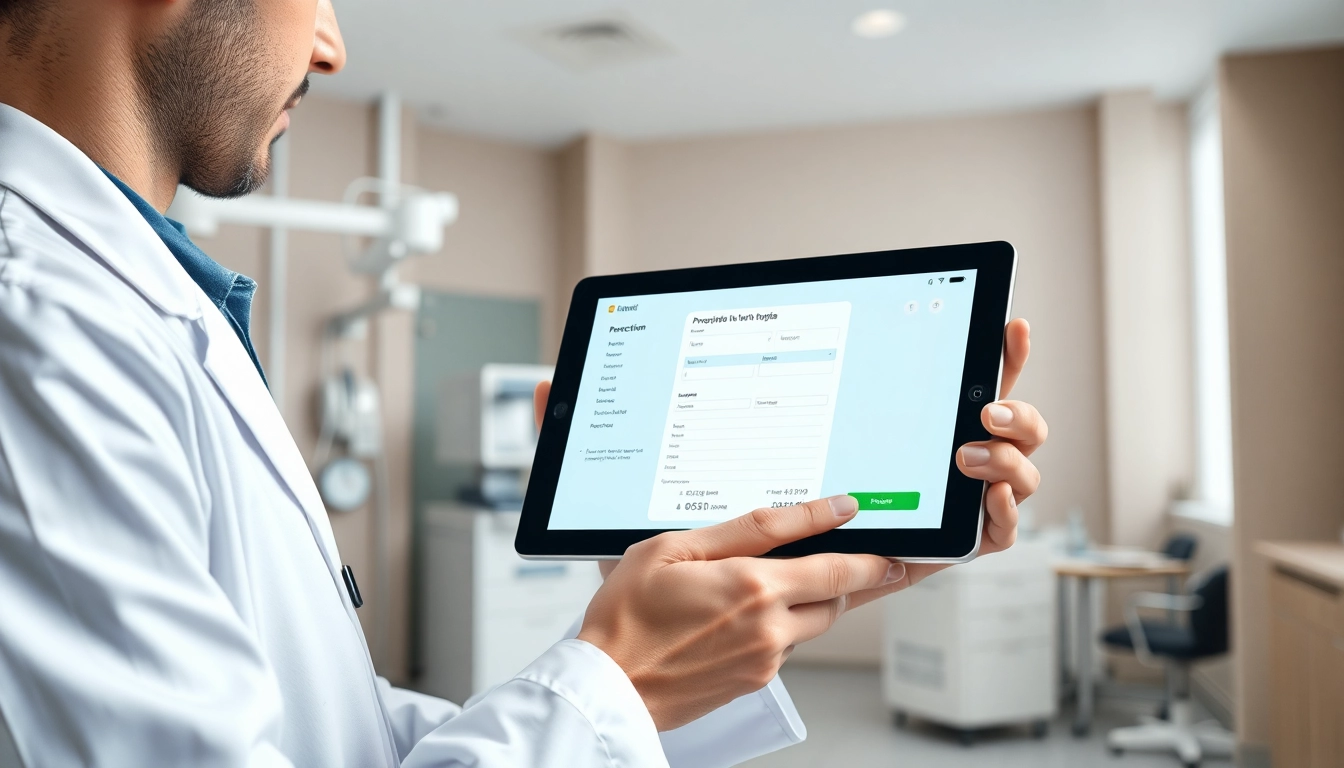Understanding the Importance of ePrescribing Software Reviews
In the rapidly evolving world of healthcare technology, selecting the right ePrescribing software is crucial for ensuring efficiency, compliance, and patient safety. With the multitude of options available, potential users often find themselves overwhelmed. This is where eprescribing software reviews play a fundamental role. These reviews provide valuable insights from real users, helping organizations make informed decisions that cater to their unique needs and workflows.
Why User Feedback Matters in Healthcare Technology
User feedback in healthcare technology is critical for several reasons. Firstly, it helps validate the performance and reliability of software systems. Healthcare practitioners often need to rely on peer testimonies that share first-hand experiences, addressing the software’s strengths, weaknesses, and usability in a clinical setting. For ePrescribing software, this feedback can illuminate details about how the platform integrates with existing systems, its user interface, and how effectively it streamlines prescribing processes.
Moreover, user reviews can highlight both the positive and negative repercussions of using a specific software solution. This includes user experiences with customer support, software updates, and ongoing system maintenance. In an industry where compliance with regulations is paramount, understanding how software performs in real-world scenarios can significantly affect organizational decision-making.
How Reviews Impact Software Selection
In a marketplace flooded with options, the selection of ePrescribing software can be daunting. Reviews help demystify the decision-making process by offering a comparative look at different platforms. Users often seek information not only about cost but also about specific features that are crucial for their practice, such as medication databases, drug interaction alerts, electronic prior authorization capabilities, and ease of use.
Furthermore, the proportion of positive versus negative reviews can offer insights into the software’s overall reputation. Trends in user feedback can signal recurring issues that might warrant further scrutiny. Just as importantly, reviews can bring attention to unique features that differentiate one software from another, enabling prospective buyers to identify a tool that truly meets their operational needs.
Key Features to Look for in ePrescribing Software
Choosing the right ePrescribing software isn’t just about its popularity in reviews; it also involves examining its essential features. Here are several key aspects that should be prioritized:
- User Interface: The software should present a clean, intuitive interface. A user-friendly platform minimizes the training required and enhances overall efficiency.
- Integration Capabilities: Robust integration with electronic health records (EHR) and other health IT systems is essential to ensure seamless workflows and data sharing.
- Medication Management: Features such as built-in drug interaction checks, formulary management, and therapy alternatives are critical in preventing medication errors.
- Compliance and Security: The software should comply with healthcare regulations, such as HIPAA, to secure patient data. Enhanced security measures like two-factor authentication further safeguard sensitive information.
- Support and Training: Excellent customer support and comprehensive training resources will help ensure users can efficiently utilize the software for their specific needs immediately following implementation.
Top Considerations When Evaluating ePrescribing Software
Integration with Existing Systems
One of the foremost considerations when evaluating ePrescribing software is its ability to integrate with existing systems. Successful integration can contribute to streamlined workflows that minimize the disruption associated with transitioning to new software. Software that seamlessly connects with EHRs, patient portals, and billing systems enhances the experience for both healthcare practitioners and patients alike.
Organizations should inquire about the data migration process, potential limitations regarding integration, and whether there are ongoing costs associated with maintaining these connections. A well-integrated system can lead to significant time savings, reduce administrative burdens, and improve the accuracy of patient records.
Cost vs. Value: Understanding Pricing Models
When evaluating ePrescribing software, understanding the cost versus the value it brings is imperative. Pricing models can vary greatly, including one-time licensing fees, subscription-based fees, or pay-per-use models. Determining the total cost of ownership involves considering not only the direct costs of acquisition but also potential indirect costs associated with training, support, and updates.
It’s essential to assess whether the features offered align with the organization’s needs and budget. Sometimes, opting for a more expensive solution with robust features can result in long-term savings by enhancing workflow efficiency and reducing errors.
Compliance and Security Protocols
The sensitivity of health data necessitates that ePrescribing software adheres to strict compliance regulations and security protocols. Programs should have built-in features to ensure compliance with federal and state regulations, as well as industry standards for data protection.
Organizations must evaluate how the software handles sensitive data, including the use of encryption, secure cloud storage solutions, and user access controls. Furthermore, it is vital to understand the process for reporting breaches if they occur, as well as what contingencies the software provider has in place.
Unique Aspects of ePrescribing Software Reviews
Comparison of User Experiences across Different Platforms
Reviews of ePrescribing software can provide a rich tapestry of user experiences that highlight what practitioners love and what frustrates them across various platforms. These comparisons not only give an overview of the software’s capabilities but also uncover nuances that could influence a decision.
Key indicators in user experiences include the ease of accessing features, the reliability of software in real-time for prescribing, and the feedback from end-users about how well the software meets their daily workflows. These insights can directly correlate to the quality of care delivered to patients and the efficiency of clinical operations.
Analyzing Ratings and Testimonials: What to Trust
Not all reviews are created equal, and discerning credible feedback requires attention to detail. Reviewing aggregate ratings alongside qualitative testimonials can provide a more nuanced understanding of how a software performs. Look for patterns in comments where users express specific features they appreciate or issues they’ve encountered.
In addition, consider the volume of reviews; a large number of reviews often yields a more reliable average rating, signifying a broader user base. Conversely, a few reviews may indicate either a new product or niche use that could impact its reliability within more established environments.
Common Challenges Faced by Users and How to Overcome Them
Embracing new ePrescribing software can present various challenges, such as resistance to change among staff or technological issues during initial rollout. Identifying these potential hurdles beforehand allows organizations to devise strategies to overcome them.
For instance, implementing a phased rollout with pilot groups can minimize chaos and provide valuable feedback. Offering continuous support and training encourages staff to embrace the software, which can ultimately improve user satisfaction and enhance the effectiveness of the software.
Best Practices for Using ePrescribing Software Effectively
Training and Onboarding for Healthcare Staff
Effective training and onboarding are paramount to maximizing the benefits of ePrescribing software. Comprehensive training programs should cover every facet of the system, from basic navigation to troubleshooting common problems. It’s beneficial to provide personalized training sessions adapted to different roles to help every user feel competent and confident in their capabilities.
Setting up a feedback loop post-training can also be advantageous. Regular check-ins can help identify lingering uncertainties and guide users to better utilize software features, ultimately enhancing both satisfaction and patient outcomes.
Maximizing Efficiency: Tips for Workflow Integration
Once staff is trained, the next step is ensuring that the ePrescribing software fits seamlessly into the current workflow. Evaluate existing practices and actively seek out areas where the software can improve or automate processes.
Establishing best practices for documenting prescriptions and sharing updates can streamline communication among healthcare teams. Regularly reviewing workflow integration and remaining vigilant for possible bottlenecks can significantly enhance productivity and workflow efficiency.
Monitoring Performance and User Satisfaction
After full implementation, ongoing monitoring of both software performance and user satisfaction is vital. Routinely collect feedback through surveys or meetings to gauge how well the software meets the needs of users and identify areas for improvement.
This approach not only fosters an environment of continuous improvement but also strengthens relationships between software vendors and users. Regular updates and performance assessments can ensure the software remains an asset to the healthcare organization, rather than becoming a source of frustration.
Future Trends in ePrescribing Software and User Reviews
Emerging Technologies and Their Impact on Reviews
The landscape of ePrescribing software is undergoing rapid changes with technological advancements. Innovations, such as artificial intelligence (AI) integration, predictive analytics, and telehealth capabilities, are likely to alter how software is perceived and reviewed.
These technologies can improve decision-making by providing practitioners with real-time analytics and recommendations based on patient history and current prescriptions. As these functionalities become mainstream, users will likely provide feedback centered on their effectiveness and usability, shaping future implementation strategies.
Anticipating Changes in User Needs and Feedback
As healthcare continues to evolve, so too do the needs of its practitioners. Keeping a pulse on changes in patient care practices, regulatory requirements, and technological capabilities will position organizations to adapt their ePrescribing systems accordingly.
Proactive monitoring of user feedback trends will enable software developers to adjust their offerings to better meet the changing needs of healthcare providers and their patients, fostering an environment of sustained satisfaction and improved care quality.
Strategies for Staying Updated with the Latest Software Reviews
For healthcare professionals looking to stay informed about the latest in ePrescribing software reviews, employing a few strategic methods can be beneficial. Subscribing to healthcare technology publications, joining professional groups, and participating in forums can help practitioners remain in the loop. Additionally, leveraging social media platforms to engage with thought leaders in healthcare technology can yield valuable insights.
Regularly revisiting and reflecting on independently compiled user reviews will ensure that healthcare providers are informed when considering changes to their prescribing software, paving the way for informed, data-driven decisions that enhance patient care and operational efficiency.



